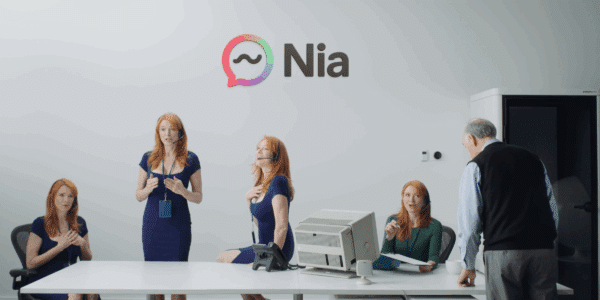In a rapidly digitizing world, artificial intelligence (AI) continues to revolutionize numerous industries. A technology that’s proving particularly transformative is chatbots. These digital assistants interact in human-like ways, answering queries, providing information, and performing tasks in an array of professional contexts. Healthcare is one such industry where chatbots have begun to make a significant impact, transforming the patient experience, streamlining operations, and revolutionizing communication.

This article will explore the multifaceted role of chatbots in healthcare. We will delve into their numerous benefits, from improving accessibility to enhancing patient engagement and reducing costs. Special attention will be given to the important issue of HIPAA compliance, particularly for chatbots dealing with sensitive health data. We’ll explore how some platforms, like OhMD Patient Texting, ensure this vital aspect of patient confidentiality and security. However, as with any emerging technology, there are challenges to consider, which we’ll discuss alongside potential mitigating strategies.
Let’s embark on this journey to understand the transformative potential of chatbots in healthcare, the necessity of HIPAA compliance, and the hurdles to be crossed in this digital revolution.
Section 1: The Benefits of Chatbots in Healthcare
Improve Accessibility
The growing accessibility of the internet and digital devices has democratized access to information and services in an unprecedented way. In the realm of healthcare, this shift has critical implications. Chatbots, operating 24/7 and breaking the geographical barriers that once hindered healthcare delivery, have the potential to reach wider patient populations than ever before. For example, rural patients who might have previously struggled to access medical facilities can now receive advice at the touch of a button.
These digital assistants also provide service beyond the confines of normal operating hours. Whether a patient has a question about their medication at midnight or wants to schedule an appointment early in the morning, chatbots are available to assist. This constant availability can also reduce patient anxiety, as there’s always a line of communication open to address their needs.
Efficiency and Cost-Saving
In the healthcare industry, time is a precious commodity. Every minute saved by healthcare professionals can be redirected towards complex tasks and high-value interactions that require their expertise. Chatbots are poised to take over routine administrative tasks, such as scheduling appointments, reminding patients of upcoming visits or medication intake, and answering frequently asked questions. This not only enhances efficiency but can also significantly reduce operational costs.
For instance, consider a hospital where front desk staff spend a large portion of their day scheduling appointments. Implementing a chatbot to manage this task can free up their time to focus on in-person patient care, ensuring a smoother and more efficient operation overall. On the patient side, it means quicker service and less time spent on hold or waiting for responses.
Moreover, with the potential to handle vast volumes of patient interactions simultaneously, chatbots can scale in a way humans simply cannot. This scalability translates to cost savings, as healthcare providers can service more patients without a proportional increase in resources or staff.
Patient Engagement and Education
Chatbots can play a key role in enhancing patient engagement, a crucial aspect of healthcare that significantly impacts patient outcomes. Through reminders about appointments and medication, personalized health tips, and interactive health assessments, chatbots can keep patients engaged in their healthcare journey.
In terms of patient education, chatbots can provide valuable health-related information in an easily digestible and interactive manner. This can range from explaining complex medical conditions and procedures to providing tips for managing chronic illnesses or maintaining a healthy lifestyle. By tailoring their responses to the individual, chatbots can make this information more relevant and engaging, thereby enhancing health literacy.
Section 2: HIPAA Compliant Chatbots: Safeguarding Patient Data
While chatbots offer numerous benefits in healthcare, their use also raises critical considerations regarding data privacy and security. The Health Insurance Portability and Accountability Act (HIPAA) sets stringent standards for the protection of sensitive patient health information. Any chatbot dealing with health data must, therefore, be HIPAA compliant.
Compliance is not a simple checkbox but involves ensuring end-to-end security. This includes secure data transmission, storage, and access controls, as well as features such as data encryption and user authentication. It is crucial for chatbot providers to demonstrate these safeguards to earn the trust of healthcare organizations and patients alike.
One platform that meets these stringent standards is OhMD Patient Texting. OhMD offers a HIPAA compliant platform for patient communication that makes interaction between healthcare providers and patients as simple as texting, while ensuring the secure exchange of health information. Their platform includes features such as secure messaging, appointment reminders, and a patient portal, all while safeguarding patient data.
Section 3: Challenges of Chatbots in Healthcare
While chatbots offer a myriad of benefits and opportunities for healthcare, it’s important to address the challenges and limitations that accompany their use.
Data Privacy and Security
Healthcare data is sensitive and personal, thus its protection is paramount. As discussed earlier, chatbots dealing with healthcare data must be HIPAA compliant. However, beyond regulatory requirements, chatbots must be built with robust security measures to safeguard against data breaches and cyber-attacks. This includes secure coding practices, regular security testing, and the implementation of advanced security features such as encryption and intrusion detection systems.
Technological Limitations
While AI has come a long way, it’s not infallible. There are still limitations to the complexity of tasks a chatbot can handle and the accuracy of its responses. For example, while a chatbot might be able to provide general advice on common health issues, it cannot replace a doctor’s comprehensive evaluation and diagnosis. Additionally, misunderstandings or errors can occur, particularly when dealing with ambiguous language or complex queries.
User Acceptance
Despite the convenience and benefits chatbots provide, user acceptance can be a hurdle. Some patients may be uncomfortable discussing their health issues with a machine or may prefer the human touch that comes with traditional healthcare interactions. Others may have concerns about the accuracy of information provided by chatbots or may find them impersonal.
Mitigating Challenges
While these challenges are significant, they are not insurmountable. Strong data security measures, continuous improvement of chatbot technology based on user feedback and advancements in AI, and patient education can all help mitigate these challenges. For instance, demonstrating the security measures in place, showing the benefits of chatbot use, and providing clear information about the bot’s capabilities can help build user trust and acceptance.
Conclusion
Chatbots are transforming healthcare, offering myriad benefits such as improved accessibility, increased efficiency, cost savings, and enhanced patient engagement. Platforms like OhMD Patient Texting demonstrate the potential of chatbots to securely and effectively facilitate patient communication.
However, their implementation is not without challenges. Data privacy and security, technological limitations, and user acceptance are all hurdles that need to be addressed. But with robust security measures, continued technological advancements, and patient education, these challenges can be navigated, paving the way for chatbots to play an increasingly integral role in the future of healthcare.
As we move forward, chatbots hold the promise of making healthcare more efficient, accessible, and patient-centered. The journey may be complex, but the potential rewards for patients and healthcare providers alike make it a venture worth pursuing.

